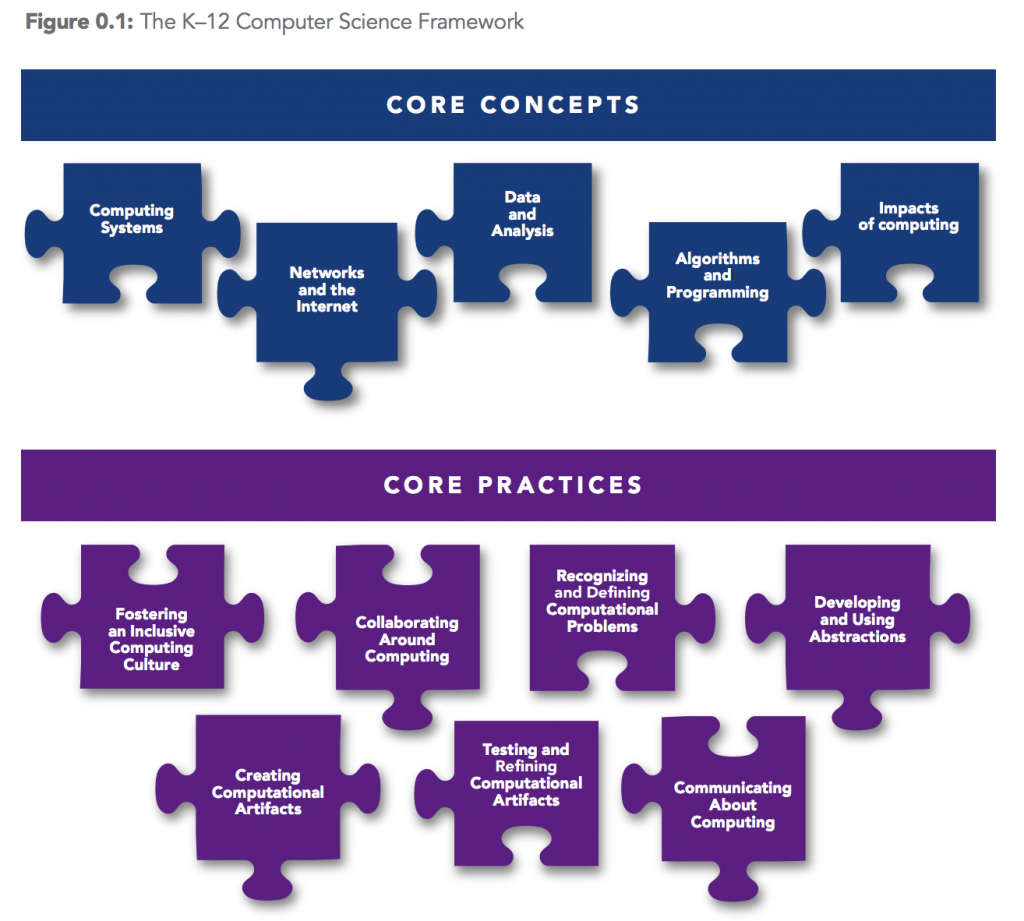In het document K12 Computer Science Framework formuleren The Association for Computing Machinery, Code.org, Computer Science Teachers Association, Cyber Innovation Center, en National Math and Science Initiative de core concepts (kernconcepten) en core practices (kernpraktijken) van K12 Computer Science.
Computational Thinking maakt in hun overzicht deel uit van de core practices. Daarnaast hanteren ze nog crosscutting concepts. De uitleg daarvan is dat:
These “crosscutting concepts” provide thematic connections across the core concepts. The criteria for selection of a crosscutting concept was that it should
- apply across multiple core concepts,
- illuminate connections between different core concepts of computer science,
- build familiarity with fundamental themes in computer science through repetition in different
contexts, and - create a richer understanding of a concept statement in which it is integrated
De Crosscutting Concepts zijn:
1. Abstraction
2. System Relationships
3. Human–Computer Interaction
4. Privacy and Security
5. Communication and Coordination
Zoals gezegd maakt Computational Thinking dus deel uit van de core practices.
1. Fostering an Inclusive Computing Culture
2. Collaborating Around Computing
3. Recognizing and Defining Computational Problems
4. Developing and Using Abstractions
5. Creating Computational Artifacts
6. Testing and Refining Computational Artifacts
7. Communicating About Computing
Ze geven de volgende uitleg over waarom CT op deze manier in de core practices staat:
Computational thinking plays a key role in the computer science practices of the framework as it encompasses practices 3, 4, 5, and 6. Practices 1, 2, and 7 are independent, general practices in computer science that complement computational thinking. Multiple research articles and documents informed the delineation of computational thinking practices, such as Operational Definition of Computational Thinking for K–12 Education (ISTE & CSTA, 2011) and Assessment Design Patterns for Computational Thinking Practices in Secondary Computer Science (Bienkowski, Snow, Rutstein, & Grover, 2015).
Interessant vind ik ook dat ze schrijven dat ze nog niet in staat zijn om die core practices per niveau te omschrijven:
The practice statements delineate specific expectations by the end of 12th grade and are followed by a narrative that describes the progression leading to those end points. This structure differs from the grade-band delineation of the core concepts because the current research base and practitioner experience with practices in computer science do not provide enough information to create clear, grade-banded expectations. The narratives describe the practice progressions in a manner that is less prescriptive about developmental appropriateness to emphasize flexible expectations.

Comments
Leave a comment Trackback